
Student Headshots

Neev Naguboyina
School: Oakton High School
Mission Partner: Jeremy Grenfell
Project Title: NRO project, Team 4
Teammates Names: Mitra Manikanda, Rohan Bhandage, Neev Naguboyina, Shrihan Bathula, Riti Lahoti, Avery Miller, Rohan Master, Srihith Layagala, Tejas Ravipati
Project Description: We were assigned the responsibility of manually tracking all governance requirements that needed to be followed for compliance. To tackle this challenge, we conducted several interviews, gathering essential information crucial to our project. Our ultimate solution involved developing an AI chatbot designed specifically to address and automate our needs. This AI chatbot effectively extracts pertinent data from PDF documents within the Air Force Operations Department, seamlessly integrating this information into its system. As a result, users can now receive highly personalized and detailed responses to their inquiries directly from the chatbot. This innovation streamlines the process of accessing necessary governance information and enhances overall efficiency by reducing manual efforts and potential errors associated with traditional methods. By harnessing the power of AI, our solution not only meets but exceeds the initial project requirements, demonstrating its capability to effectively adapt and optimize operations in compliance management.
Rhea Bhadange
School: Independence High School
Mission Partner: Jeremy Grenfell
Project Title: Wingman
Teammates Names: Arjun, Avery, Mitra, Neev, Riti, Rohan B, Shrihan, Tejas, Rohan M, Srihith.
Project Description: We developed an AI chatbot to solve the issue of navigating through many PDFs on the Air Force E-pub website to find the roles and responsibilities of unique positions. Wingman can pull from the main link from all the PDFs in the Operations section. After removing the PDFs, it reads through and extracts every PDF’s Roles and Responsibilities, utilizing beginning and end markers. This ensures that the roles and responsibilities remain untouched and are as authentic as possible. Then, through various tools like RAG, we could input the roles and responsibilities from our code into the context of the chatbot so that it could pull from the information. Wingman then can output a checklist with all the roles and responsibilities, allowing for easy searching and saving many hours. In addition to the checklist, it outputs the source and section where the information was found. It also has the versatility to output human-like conversation because it uses GPT 3.5-Turbo from OpenAI so that users can ask any follow-up questions or statements. Our project is also further explained in our presentation and final documentation. This will contain more specifics as to which libraries we used and our general process for the creation and birth of Wingman.
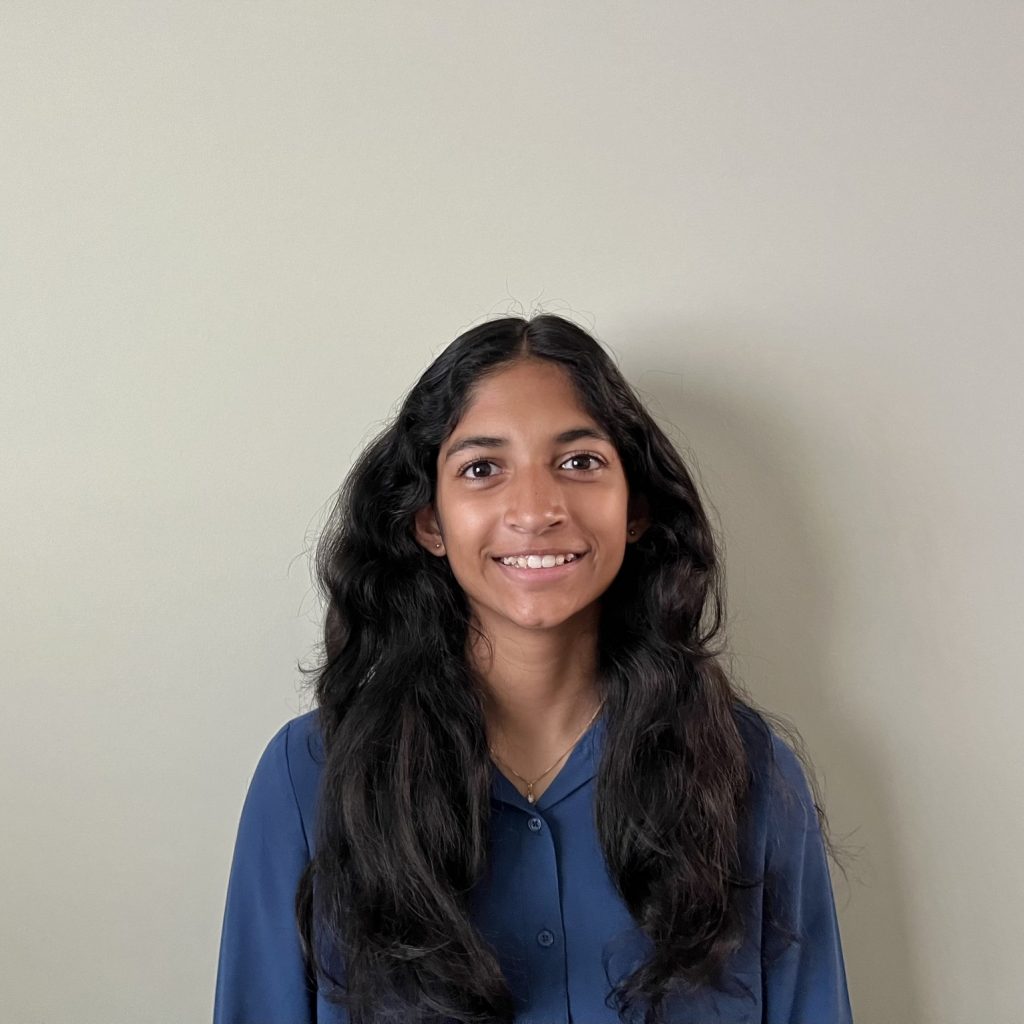
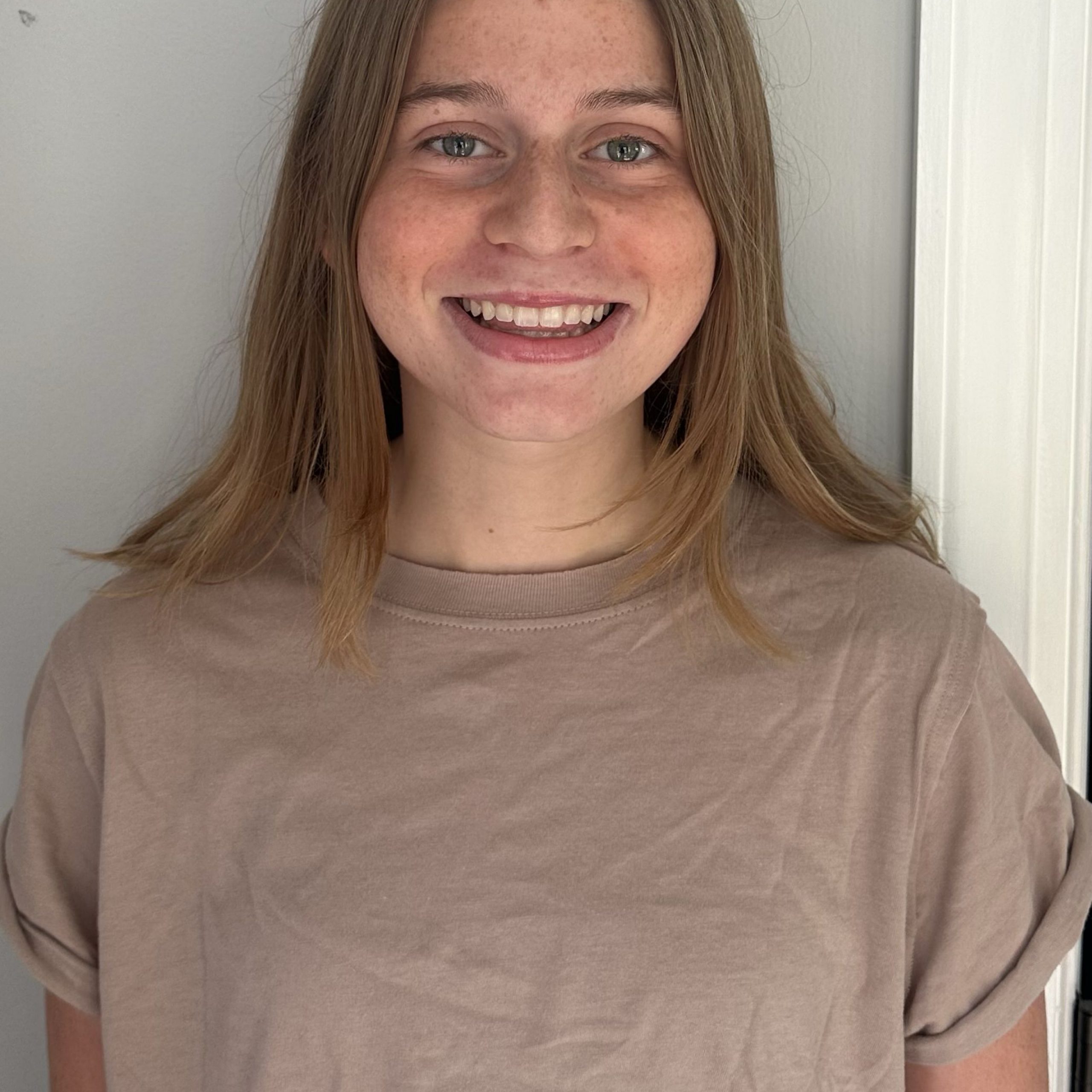
Avery Miller
School: The Potomac School
Mission Partner: Jeremy Grenfell
Project Title: Wingman
Teammates Names: Arjun, Avery, Mitra, Neev, Riti, Rohan B, Shrihan, Tejas, Rohan M, Srihith.
Project Description: We developed an AI chatbot to solve the issue of navigating through many PDFs on the Air Force E-pub website to find the roles and responsibilities of unique positions. Wingman can pull from the main link from all the PDFs in the Operations section. After removing the PDFs, it reads through and extracts every PDF’s Roles and Responsibilities, utilizing beginning and end markers. This ensures that the roles and responsibilities remain untouched and are as authentic as possible. Then, through various tools like RAG, we could input the roles and responsibilities from our code into the context of the chatbot so that it could pull from the information. Wingman then can output a checklist with all the roles and responsibilities, allowing for easy searching and saving many hours. In addition to the checklist, it outputs the source and section where the information was found. It also has the versatility to output human-like conversation because it uses GPT 3.5-Turbo from OpenAI so that users can ask any follow-up questions or statements. Our project is also further explained in our presentation and final documentation. This will contain more specifics as to which libraries we used and our general process for the creation and birth of Wingman.
Dhwani Jain
School: Thomas Jefferson High School for Science and Technology
Mission Partner: Michael Sabin
Project Title: Automating Self-Assessment Checklists in Air Combat Command – FlightList
Teammates Names: Vineel Kandala, Deepthi Kumar, Elizabeth Onafuwa, Shivam Papneja, Suha Nalluri
Project Description: Our project revolves around the automation of Self-Assessment Checklists (SACs) for the Air Combat Command (ACC). The ACC currently extracts keywords and sentences using MICT and then they have to manually create questions. Due to the constantly changing regulations SACs have to be updated regularly. This becomes quite inefficient because it can take a lot of time and manpower. Our proposed solution would be able to directly extract text from the documents of regulations and use an API to create questions. We would then be able to save the questions to an excel spreadsheet. Currently our pre-prototype can extract text from a document and then extract key sentences, starting with “will”, “shall”, or “must”. In addition to the sentences, we were also able to extract the section numbers, so that it would be easier to identify which chapter the key sentences/questions were from in the publications. We then used the groqcloud API to automatically generate questions, which are then saved to a CSV file. This CSV file can then be opened as an excel spreadsheet. We arrived at this solution by speaking to our Mission Partner, Mr. Michael Sabin, as well as several beneficiaries who helped us understand the problem and gave us feedback on our solution.


Amulya Gottipati
School: Rock Ridge High School
Mission Partner: Allen Vance
Project Title: Defense Digital Service(DDS)
Teammates Names: Aditya, Akaash, Arya, Deepika, Lasya, & Suchir.
Project Description: Currently, the Defense Digital Service (DDS) personnel manually extracts relevant information from the National Defense Authorization Act (NDAA) documents, to identify trends and allocate resources to emerging threats and priorities. However, as personnel have to manually extract this information, this causes manual burden, resulting in an increased risk of errors and requiring a significant amount of time. Additionally, NDAA documents are approximately 2600 pages long and contains intricate portions that many people overlook. Thus, our solution was to perform a text analysis on NDAA documents using AI and develop an application to enable DDS personnel to input any document and search for criteria given by the DDS, aiding in understanding key term importance over time.
Deepthi Kumar
School: Thomas Jefferson High School for Science and Technology
Mission Partner: Micheal Sabin
Project Title: FlightList
Teammates Names: Suha Nalluri, Dhwani Jain, Vineel Kandala, Elizabeth Onafuwa, Shivam Papneja
Project Description: The Air Force requires all units to conduct an assessment to ensure the safety of their internal controls. They do this through Self-Assessment Checklists (SAC), within the Management Internal Control Toolset (MICT). SACs are extremely important – they are critical for maintaining the accountability, efficiency and readiness within organizations. However, a significant challenge arises with SACs due to the constant changes in regulations, necessitating frequent updates to the checklist. The initial document that outlines Air Force regulations is extensive, spanning over 74 pages. As a result, creating checklist questions based off these requirements, can be extremely time-consuming when done manually.
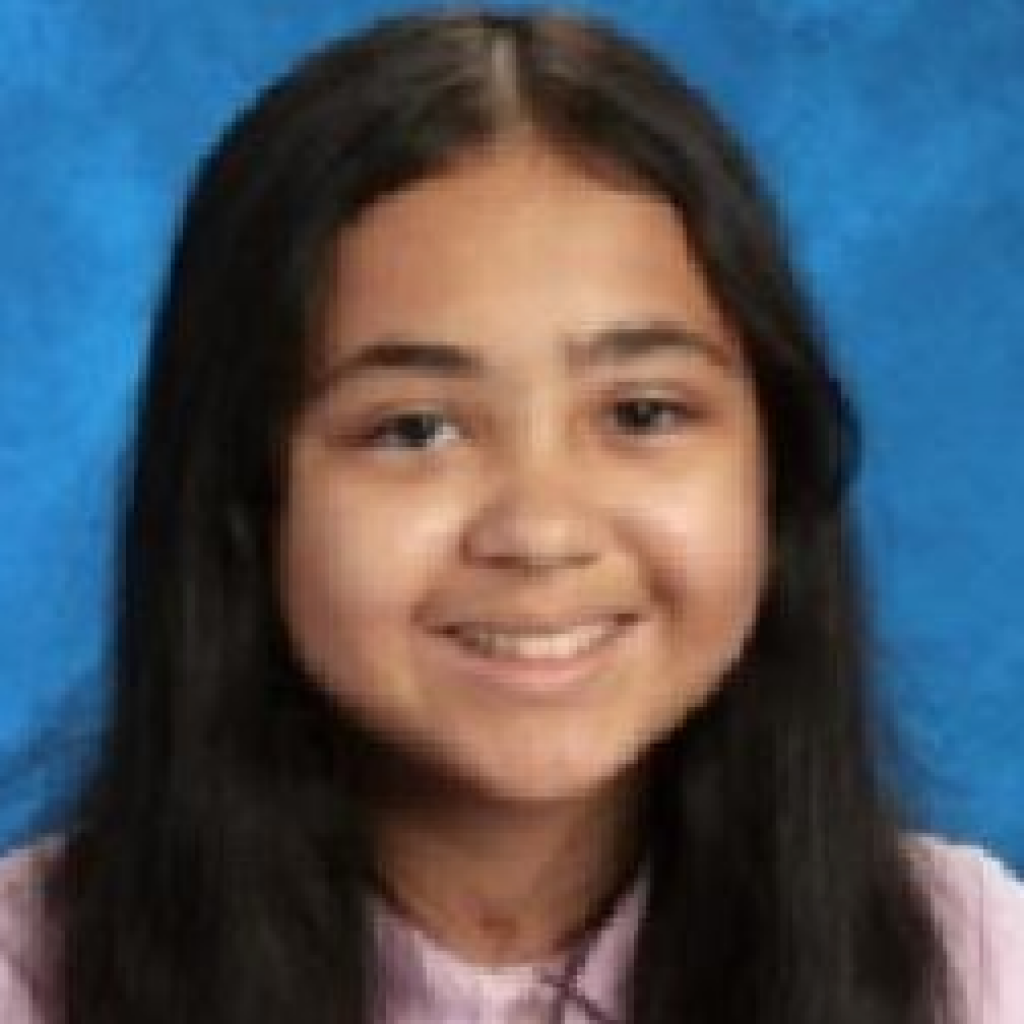

Ishika Chelpati
School: Lightridge High School
Mission Partner: Omar Marrero
Project Title: Use of NLP (Natural Language Processing) to Automate the Integration of Legacy Requirements with New Requirements for the United States AOC (Air Operations Center).
Teammates Names: Aayan Repala, Grace Amartuvshin, Vivek Kakarla and Saif Mahmood.
Project Description: Our project focuses on using Natural Language Processing (NLP) to automate the integration of legacy and new requirements for the United States Air Operations Center (AOC). The AOC oversees complex operations that rely on numerous requirements, which often become redundant and outdated. Our solution employs NLP techniques to analyze and compare thousands of legacy and new requirements, identifying similarities to streamline the process. We developed an AI system using Python and various open-source libraries, including spaCy for NLP, pandas for data manipulation. The Term Frequency-Inverse Document Frequency (TF-IDF) method transforms text data into numerical representations, enabling the AI to assess the importance of each word and cluster similar requirements. Additionally, the Groq API ensures that integrated requirements are coherently written, maintaining clarity and usability. Our AI system is implemented within a user-friendly web interface, allowing warfighters to quickly access and manage requirements. This integration not only enhances operational efficiency but also aids in the precise allocation of funding, ensuring that critical needs are met without unnecessary expenditure. By automating this process, our project significantly reduces manual effort and potential errors, thereby improving decision-making within the Department of Defense. This innovative approach exemplifies the potential of AI to transform traditional workflows and optimize resource management in defense operations.
Shrihan Bathula
School: Lightridge High School
Mission Partner: Jeremy Grenfell
Project Title: Governance Solution for the NRO
Teammates Names: Tejas Ravipati, Srihith Layagala, Neev Naguboyina, Riti Lahoti, Rohan Bhadange, Rohan Master, Mitra Manikandan, Arjun Rao, Avery Miller, Rhea Bhadange.
Project Description: This solution utilizes web scraping, artificial intelligence, and other Python libraries to extract governance from online military agency documents. First, it sources the PDF documents from the Department of the Air Force’s E-publishing website and outputs the individual URLs to the PDFs. Then, it opens the PDFs and searches within the documents for sections that contain specific tokens. These tokens indicate the start and end of the “Roles and Responsibilities” section in each document, which is exactly the information that is required by NRO Inspector Generals and end-users when understanding the requirements for their role. This scraping does not destroy or randomize the text in any way, so the structure of each section is preserved. After separating each section, they are processed into an AI chatbot powered by OpenAI’s API, which can be queried by the end user or inspector about different military duties to provide a clear understanding of each position within the agencies. In the future, it will be able to deploy as a container using Docker Engine and Docker Compose, thus allowing the application to run on almost any platform.

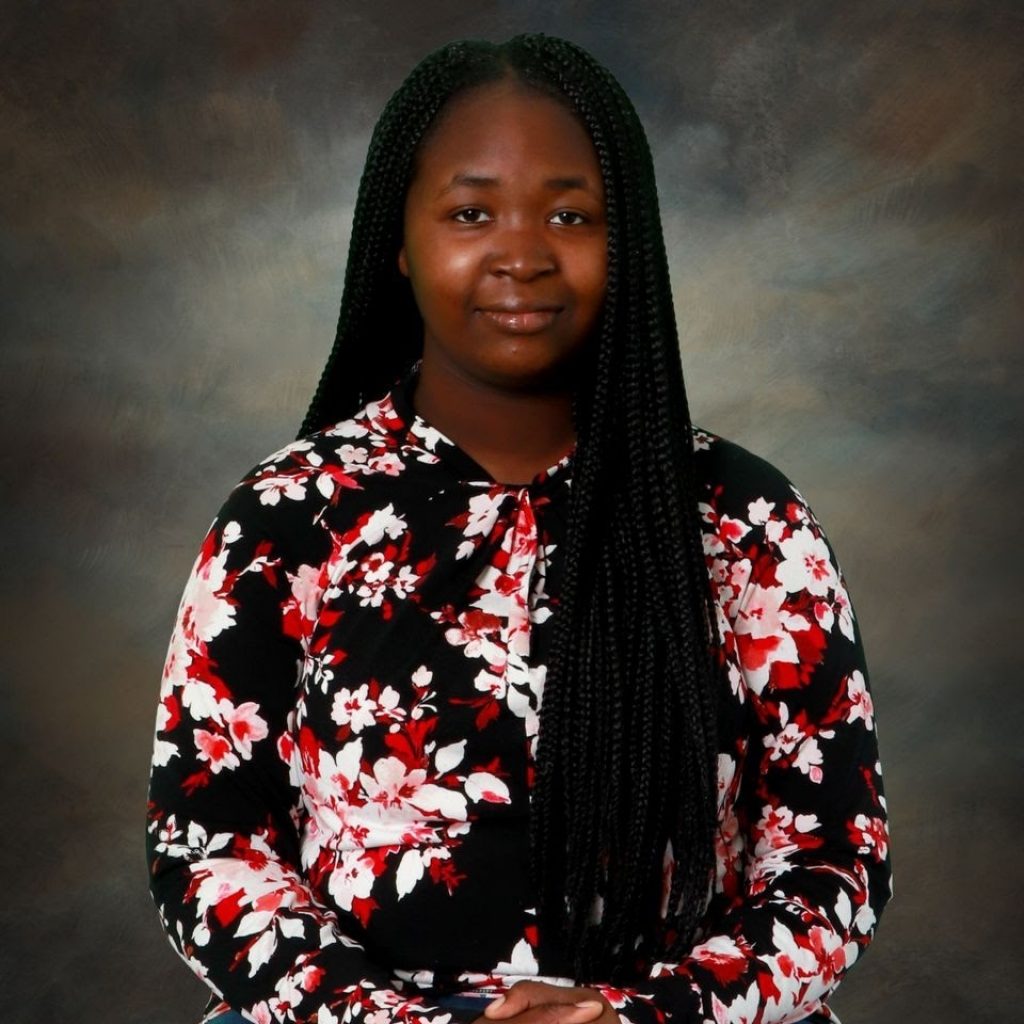
Elizabeth Onafuwa
School: Dundalk High School
Mission Partner: Michael Sabin
Project Title: Air Combat Command (ACC)
Teammates Names: Suha Nalluri, Shiv Papneja, Deepthi Kumar, Dhwani Jain, Vineel Kandala
Project Description: FlightList is an innovative product set to revolutionize the development of the subject area curriculum (SAC) with its advanced features. It excels in keyword extraction, targeted search capabilities, and AI-driven question generation, making SAC creation efficient and precise. Continuously learning from usage, FlightList autonomously improves over time, ensuring up-to-date and insightful educational content. Completely automated, it streamlines the SAC development process, offering educators and curriculum developers a powerful tool for enhancing educational outcomes effortlessly.
Aditya Barman
School: University of Illinois Urbana-Champaign
Mission Partner: Allen Vance
Project Title: Digital Defense Service
Teammates Names: Amulya Gottipati, Arya Jadhav, Deepika Ravi, Lasya Gulapalli, Suchir Godavarthi, Akaash Sachdeva
Project Description: In collaboration with the Defense Digital Service (DDS), the 2023, 2024, and 2025 iterations of the National Defense Authorization Act (NDAA) were analyzed using a frequency analysis to identify trends in key terms such as “Ukraine,” “Israel,” and “AI.” Using PyPDF2 for text extraction and regular expressions for frequency analysis, the data was visualized through bar and line charts with the Matplotlib library. The findings showed that most terms remained stable in frequency between 2023 and 2024 and increased in 2025, with the exception of “Houthi,” which decreased from 2024 to 2025. The analysis provides valuable insights for DDS employees, aiding strategic planning and task prioritization. With evolution, the project, endorsed by DDS Director Jennifer Hay, will evolve into a tool for broader term frequency analysis across many documents.

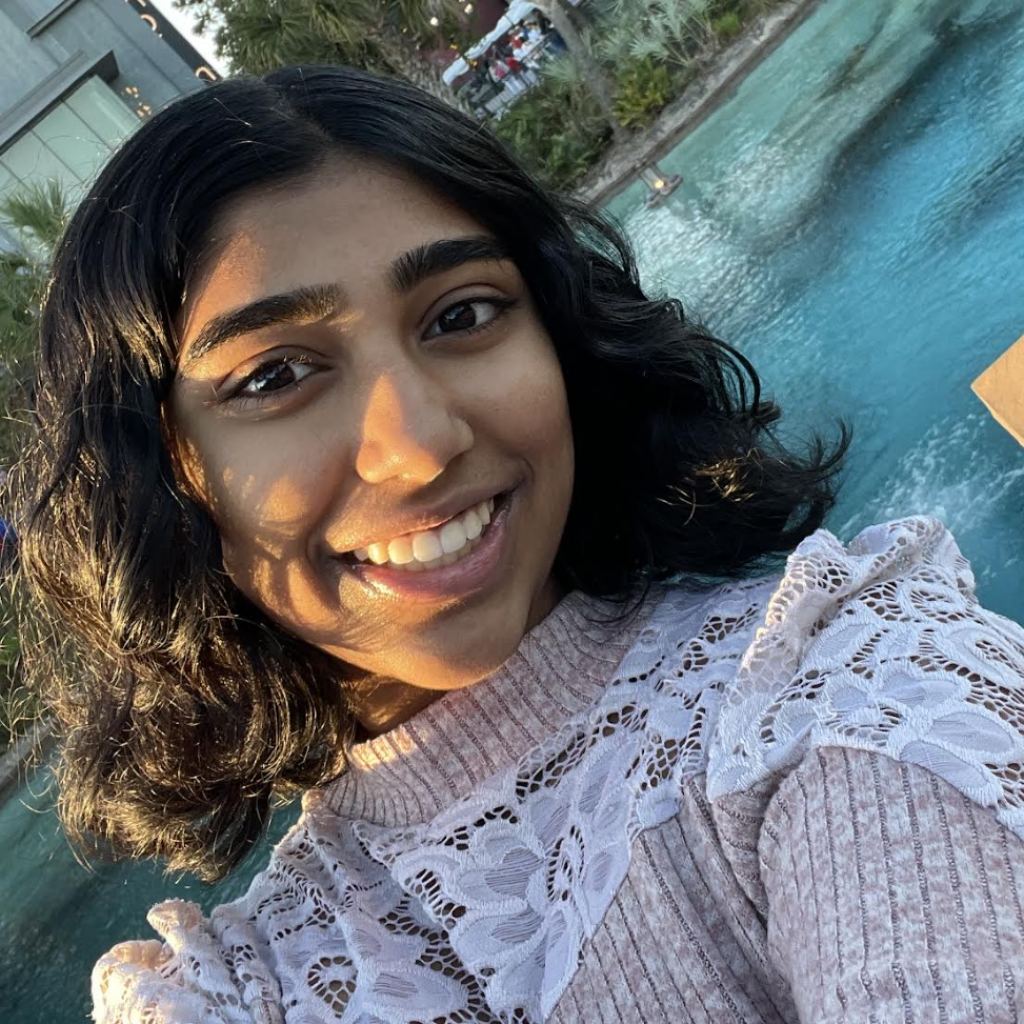
Lasya Gullapalli
School: Langely High school
Mission Partner: Allen Vance
Project Title: A Text Analysis of the National Defense Authorization Act for the Defense Digital Service
Teammates Names: Aditya Barman, Deepika Ravi, Akaash Sachdeva, Lasya Gullapalli, Amulya Gottipati, Suchir Godavarthi, Arya Jadhav
Project Description: Our project began with the primary objective of conducting a comprehensive text analysis spanning three consecutive years of the National Defense Authorization Act (NDAA), culminating in the visualization of our findings. Our hypothesis posited that developing an AI-powered tool for text analysis of NDAA documents and subsequently creating visual displays would significantly alleviate the manual effort required to identify crucial terms. This innovation aimed specifically at benefiting professionals within the Defense Digital Service, offering them streamlined insights into legislative priorities without the traditional labor-intensive methods. To achieve this goal, our approach involved employing PyPDF2 for extracting text from NDAA documents spanning from 2023 to 2025. We then utilized regular expressions to conduct frequency analyses on specific terms deemed relevant to defense policy and operational needs. The results of our analyses were effectively visualized using Matplotlib, a versatile plotting library in Python, which enabled us to create detailed charts. These charts include three distinct visuals illustrating term frequencies within each NDAA document and an additional graph depicting how these frequencies evolved across the years studied. By presenting these trends visually, our project not only enhances the accessibility and interpretability of NDAA content but also supports data-driven decision-making processes within defense policy analysis. This approach facilitates a deeper understanding of legislative changes and priorities over time, empowering stakeholders to make informed strategic choices more efficiently.
Saifullah Mahmood
School: Thomas A. Edison High School
Mission Partner: Omar Marrero
Project Title: AOC – Legacy Requirements
Teammates Names: Aayan Repala, Ishika Chelpati, Grace Amartuvshin, Vivek Kakarla, Saif Mahmood
Project Description: The Air Operations Center (AOC) determines funding in POM (Program Objective Memorandum) Cycles. These POM cycles detail resource allocation 5 years in advance as requirements. In order to get the funding, they have to align with requirements. The AOC has a document thousands of requirements long. We made an AI system that takes these requirements and links them together. The AI system then integrates these requirements. The purpose of this tool is to make the requirements easier to sort through and more efficient to use. We made the system in Python and used many open source libraries to process the requirements. The requirements are then stripped of stop words (and, a, so, etc.) and with the spaCy library. We then cluster them into relevant groups with KMeans clustering. Finally, we use the Groq API in order to make the sentences more legible and clearer. The model our system uses is the “llama3-8b-8192” model from Groq. Our system is near completion, more polishing is required in order for the system to be robust. Our presentation is almost done, and we are working on the script. Mr. Marrero was a great information source, and he really helped us understand what exactly we needed to do to address the problem.


Grace Amartuvshin
School: Thomas Jefferson High School for Science and Technology
Mission Partner: Omar Marrero
Project Title: Use of NLP (Natural Language Processing) to Automate the Integration of Legacy Requirements with New Requirements for the United States AOC (Air Operations Center).
Teammates Names: Aayan Repala, Ishika Chelpati, Grace Amartuvshin, Vivek Kakarla, Saif Mahmood
Project Description: The Air Operations Center (AOC) determines funding using POM (Program Objective Memorandum) Cycles. During these cycles, a detailed five-year plan is developed for resource allocation, based on requirements that programs must meet. These requirements are held in a large Excel sheet with thousands of requirements, some dating back forty years. Our Mission Partner, Omar Marrero, asked us to develop an AI to sort through thousands of legacy (old) requirements and compare them with new requirements to make adjustments and eliminate redundancy. This AI will increase efficiency in the department by allowing warfighters to get these requirements quickly and determine what needs funding so that programs can be carried out sooner. We used Natural Language Processing (NLP) and Python to program an AI to find similarities between legacy and new requirements to integrate them. Some functions in our code included removing stop words (words commonly used, like and, the, a, etc.), vectorizing legacy and old requirements, and clustering similar requirements using the KMeans algorithms. Groq, a technology company, built the Language Processing Unit (LPU), an AI accelerator application-specific integrated circuit (ASIC) typically used by developers to enhance their AI and NLP models. The Groq API was used to make sure the integrated requirements were written in proper, coherent sentences by leveraging Groq’s AI and NLP capabilities into our program. By doing so, we were able to develop an AI that reads text files of legacy and new requirements, combines the requirements that have similar important words, and outputs these improved integrated requirements.
Shivam Papneja
School: Langley High School
Mission Partner: Michael Sabin
Project Title: ACC
Teammates Names: Vineel, Deepthi, Dhwani, Suha, Elizabeth.
Project Description: Our project involves helping the Air Force use AI algorithms to generate Excel spreadsheets from already written text regulations. AI in this project will help decrease the amount of human time spent on this “automatic” job and free up people to work on more pressing issues. Our solution focuses on finding the most optimal way to accomplish this task. We were able to quickly generate results by using Python’s pypdf2 (to cut out specific words from the pdf documents) and different NLP techniques. We have a slideshow and a document that explains information about our solution and how we were able to come up with it. Furthermore, they discuss the problem and the different obstacles we encountered.


Rohan Master
School: McLean High School
Mission Partner: Jeremy Grenfell
Project Title: NRO Chatbot
Teammates Names: Srihith Layagala, Mitra Manikandan, Riti Lahoti, Rhea Bhadange, Neev Naguboyina, Tejas Ravipati, Shrihan Bathula, Arjun Rao, Rohan Bhadange.
Project Description: For our project, we started with a large collection of PDFs detailing regulations for the military. Using these documents as a database for our chatbot to work with, we are making a chatbot that will be able to respond to requests for specific documentation or information, such as roles and responsibilities of certain positions. This information is important for Sergeant Jeremy Grenfell’s position.
Suha Nalluri
School: Rock Ridge High School
Mission Partner: Michael Sabin
Project Title: Automating Self-Assessment Checklists in Air Combat Command
Teammates Names: Vineel Kandala, Dhwani Jain, Deepthi Kumar, Elizabeth Onafuwa, Shivam Papneja.
Project Description: Our ultimate goal was to create an automated product that created Self-Assessments) Checklists (SAC based on Air Force regulation documents/pdfs. SACs are administered to people in the Air Force to make sure they are closely following Air Force regulations, and these checklists are created by extracting keywords like “shall,” “will,” and “must.” Developing these checklists is extremely unpleasant for two reasons. One reason is that there are typically so many questions to generate manually (the document with the current Air Force regulations has 74 pages, meaning there would be hundreds of questions to generate manually), making the process long and tedious. The second reason is that regulation documents update very frequently, thus forcing us to go through this long, tedious process several times. Fortunately, we know that the Air Force currently uses a tool from their MICT toolset that extracts sentences with the keywords “shall,” “will,” and “must.”–now, it’s our job to create a product that extracts sentences with these keywords and automates generating questions using AI tools and Natural Language Processing. We used a library called PyPDF2 to extract text from the PDF and store it in a local String variable. Next, we extracted sentences containing the keywords from the variable. Then, we used the Groq API key to generate questions based on the keyworded sentences. Finally, we exported the questions we generated to a CSV file, which we will convert into an Excel document.


Aayan Repala
School: Rock Ridge High School
Mission Partner: Omar Marrero
Project Title: Use of NLP (Natural Language Processing) to Automate the Integration of Legacy Requirements with New Requirements for the United States AOC (Air Operations Center).
Teammates Names: Aayan Repala, Ishika Chelpati, Grace Amartuvshin, Vivek Kakarla, Saif Mahmood
Project Description: We went to use research tools like Claude AI and chatGPT to see how we could use NLP in this application. This was successful and we obtained a fully detailed approach of the next steps and logic basis of the program. It was time to start coding. We used resources like github copilot and GPT4 to assist us in the syntax and debugging of the code. After hours of working on the integration of the requirements the AI was still making simple mistakes such as putting unnecessary commas and quotation marks, as well as not making the sentences flow easily. To fix that we embedded a chat AI directly inside the code. This allowed us to simply put in a prompt and ask the code to make certain adjustments in the output. This ended up being a success with our application: “ReqFusion” being able to effectively integrate requirements and present an organized list to the user.
Mitra Manikandan
School: Centreville High School
Mission Partner: Jeremy Grenfell
Project Title: Governance Solution for the NRO
Teammates Names: Srihith Layagala, Shrihan Bathula, Riti Lahoti, Rohan Master, Avery Miller, Rohan Bhadange, Neev Naguboyina, Tejas Ravipati.
Project Description: To solve the issue of the NRO having to manually track all governance available that they must follow to remain compliant in their operations, our project envisions an AI-based solution that is designed to automate the extraction of information from the Air Force Operations Department’s PDF documents and integrate this data into a chatbot, providing users with customized and detailed responses to their queries. This solution uses web scraping, artificial intelligence, and Python libraries to extract governance from online military agency documents. First, it sources the PDF documents from the Department of the Air Force’s E-publishing website and outputs the individual URLs to the PDFs. Then, it opens the PDFs and searches the documents for sections containing specific tokens. These tokens indicate the start and end of the “Roles and Responsibilities” section in each document, which is exactly the information that is required by NRO Inspector Generals and end-users when understanding the requirements for their role. This scraping does not destroy or randomize the text in any way, so the structure of each section is preserved. After separating each section, they are processed into an AI chatbot powered by OpenAI’s API, which can be queried by the end-user or inspector about different military duties to provide a clear understanding of each position within the agencies. In the future, it can deploy as a container using Docker Engine and Docker Compose, thus allowing the application to run on almost any platform.


Tejas Ravipati
School: John Champe
Mission Partner: Jeremy Grenfell
Project Title: Governance Solution for the NRO
Teammates Names: Arjun, Avery, Mitra, Neev, Riti, Rohan B, Shrihan, Tejas, Rohan M, Srihith.
Project Description: To solve the issue of the NRO having to manually track all governance available that they must follow to remain compliant in their operations, our project envisions an AI-based solution that is designed to automate the extraction of information from the Air Force Operations Department’s PDF documents and integrate this data into a chatbot, providing users with customized and detailed responses to their queries. This solution uses web scraping, artificial intelligence, and Python libraries to extract governance from online military agency documents. First, it sources the PDF documents from the Department of the Air Force’s E-publishing website and outputs the individual URLs to the PDFs. Then, it opens the PDFs and searches the documents for sections containing specific tokens. These tokens indicate the start and end of the “Roles and Responsibilities” section in each document, which is exactly the information that is required by NRO Inspector Generals and end-users when understanding the requirements for their role. This scraping does not destroy or randomize the text in any way, so the structure of each section is preserved. After separating each section, they are processed into an AI chatbot powered by OpenAI’s API, which can be queried by the end-user or inspector about different military duties to provide a clear understanding of each position within the agencies. In the future, it can deploy as a container using Docker Engine and Docker Compose, thus allowing the application to run on almost any platform.
Vivek Kakarla
School: Independence High School
Mission Partner: Omar Marrero
Project Title: Use of NLP (Natural Language Processing) to Automate the Integration of Legacy Requirements with New Requirements for the United States AOC (Air Operations Center).
Teammates Names: Saifullah Mahood, Aayan Repala, Ishika Chelpati, Grace Amartuvshin
Project Description: The Air Operations Center (AOC) determines funding using POM (Program Objective Memorandum) Cycles. During these cycles, a detailed five-year plan is developed for resource allocation based on requirements that programs must meet. These requirements are held in a large Excel sheet with thousands of requirements, some dating back forty years. Our Mission Partner, Omar Marrero, asked us to develop an AI to sort through thousands of legacy (old) requirements and compare them with new requirements to make adjustments and eliminate redundancy. This AI will increase efficiency in the department by allowing warfighters to get these requirements quickly and determine what needs funding so that programs can be carried out sooner. Our solution uses the Groq API and several open-source Python packages to effectively combine legacy and new requirements. With thousands of records spread across massive Excel sheets as legacy requirements, the pandas library is essential for working with large datasets. Pre-trained NLP models are available in the spaCy library to process and comprehend the language included in our text files. To transform text data into numerical matrix representations known as Term Frequency-Inverse Document Frequency (TF-IDF) features, we used the TfidfVectorizer from the scikit-learn module. Using the KMeans clustering algorithm, again from scikit-learn, we can cluster requirements based on similarity thanks to TF-IDF, which quantifies the significance of each word in a sentence. Accessing Groq’s language processing units (LPU) is made possible thanks largely to the Groq API, which also guarantees that the integrated needs are expressed in logical sentences.


Riti Lahoti
School: Westfield High School
Mission Partner: Jeremy Grenfell
Project Title: Governance Solution for the NRO
Teammates Names: Arjun, Avery, Mitra, Neev, Riti, Rohan B, Shrihan, Tejas, Rohan M, Srihith.
Project Description: To solve the issue of the NRO having to manually track all governance available that they must follow to remain compliant in their operations, our project envisions an AI-based solution that is designed to automate the extraction of information from the Air Force Operations Department’s PDF documents and integrate this data into a chatbot, providing users with customized and detailed responses to their queries. This solution uses web scraping, artificial intelligence, and Python libraries to extract governance from online military agency documents. First, it sources the PDF documents from the Department of the Air Force’s E-publishing website and outputs the individual URLs to the PDFs. Then, it opens the PDFs and searches the documents for sections containing specific tokens. These tokens indicate the start and end of the “Roles and Responsibilities” section in each document, which is precisely the information required by NRO Inspector Generals and end-users when understanding the requirements for their role. This scraping does not destroy or randomize the text in any way, so the structure of each section is preserved. After separating each section, they are processed into an AI chatbot powered by OpenAI’s API, which the end user or inspector can query about different military duties to provide a clear understanding of each position within the agencies. In the future, it can deploy as a container using Docker Engine and Docker Compose, thus allowing the application to run on almost any platform.
Srihith Layagala
School: Thomas Jefferson High School for Science and Technology
Mission Partner: Jeremy Grenfell
Project Title: Governance Solution for the NRO
Teammates Names: Arjun, Avery, Mitra, Neev, Riti, Rohan B, Shrihan, Tejas, Rohan M, Srihith.
Project Description: To solve the issue of the NRO having to manually track all governance available that they must follow to remain compliant in their operations, our project envisions an AI-based solution that is designed to automate the extraction of information from the Air Force Operations Department’s PDF documents and integrate this data into a chatbot, providing users with customized and detailed responses to their queries. This solution uses web scraping, artificial intelligence, and Python libraries to extract governance from online military agency documents. First, it sources the PDF documents from the Department of the Air Force’s E-publishing website and outputs the individual URLs to the PDFs. Then, it opens the PDFs and searches the documents for sections containing specific tokens. These tokens indicate the start and end of the “Roles and Responsibilities” section in each document, which is exactly the information that is required by NRO Inspector Generals and end-users when understanding the requirements for their role. This scraping does not destroy or randomize the text in any way, so the structure of each section is preserved. After separating each section, they are processed into an AI chatbot powered by OpenAI’s API, which can be queried by the end-user or inspector about different military duties to provide a clear understanding of each position within the agencies. In the future, it can deploy as a container using Docker Engine and Docker Compose, thus allowing the application to run on almost any platform.


Arjun Rao
School: University of Virginia
Mission Partner: Jeremy Grenfell
Project Title: Governance Solution for the NRO
Teammates Names: Arjun, Avery, Mitra, Neev, Riti, Rohan B, Shrihan, Tejas, Rohan M, Srihith.
Project Description: To solve the issue of the NRO having to manually track all governance available that they must follow to remain compliant in their operations, our project envisions an AI-based solution that is designed to automate the extraction of information from the Air Force Operations Department’s PDF documents and integrate this data into a chatbot, providing users with customized and detailed responses to their queries. This solution uses web scraping, artificial intelligence, and Python libraries to extract governance from online military agency documents. First, it sources the PDF documents from the Department of the Air Force’s E-publishing website and outputs the individual URLs to the PDFs. Then, it opens the PDFs and searches the documents for sections containing specific tokens. These tokens indicate the start and end of the “Roles and Responsibilities” section in each document, which is exactly the information that is required by NRO Inspector Generals and end-users when understanding the requirements for their role. This scraping does not destroy or randomize the text in any way, so the structure of each section is preserved. After separating each section, they are processed into an AI chatbot powered by OpenAI’s API, which can be queried by the end-user or inspector about different military duties to provide a clear understanding of each position within the agencies. In the future, it can deploy as a container using Docker Engine and Docker Compose, thus allowing the application to run on almost any platform.